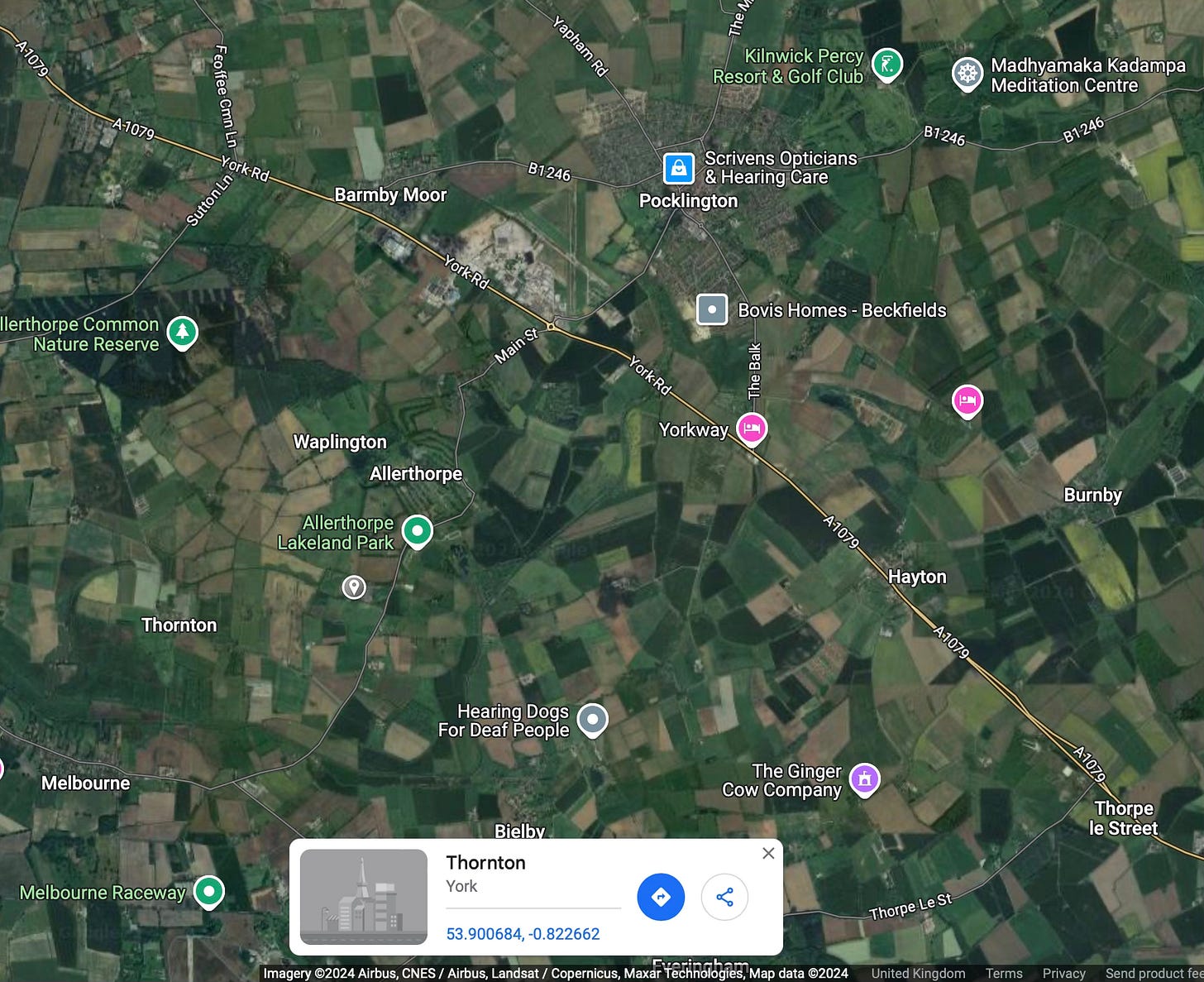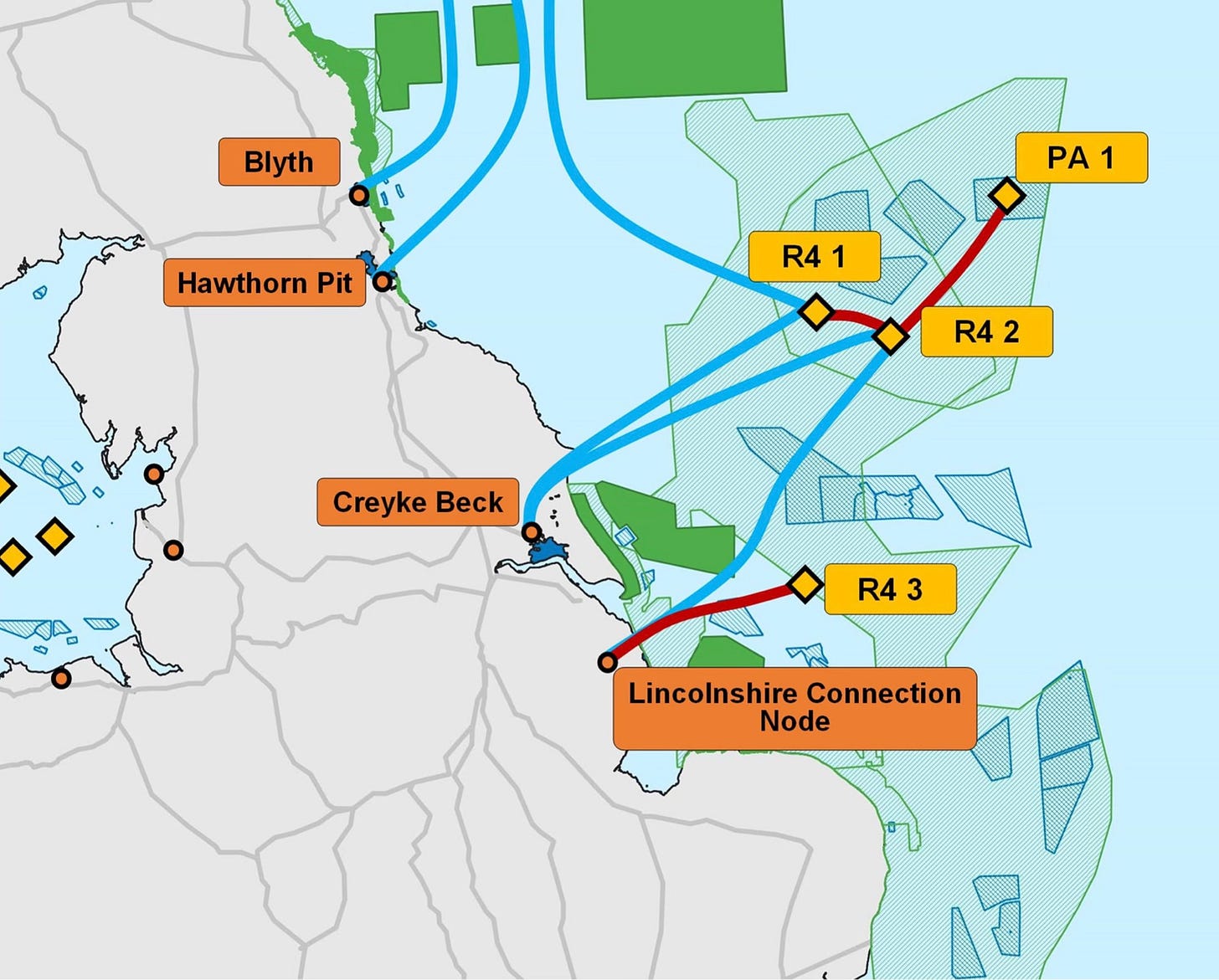Two huge new solar schemes hit the TEC Register in Lincolnshire and Yorkshire
A vast new 800MW Solar Farm in Lincolnshire, known as East Lincolnshire Solar, appeared on the TEC Register last night and follows on from a similarly large 600MW scheme in East Yorkshire.
I’ve not written anything in the last week or so due to a few days away and then the arrival of two new rescue dogs, which I’ll write about elsewhere, but normal service is now resumed…
Unlike me, NSIP solar developers have not paused for breath and two new schemes are worth mentioning. I’ll start with the larger of the two, East Lincolnshire Solar, which appeared on the TEC Register yesterday evening. This is an 800MW solar and energy storage scheme so, using our usual benchmarks, somewhere between 3,500 acres and 4,000 acres in size. The project promoter is Statkraft UK Ltd who are, by their own description, “Europe’s largest renewable energy producer and a global company in energy market operations”. The connection offer is at the Lincolnshire Coastal Node B 400kV Substation, with a connection date of May 2035.

I’ve done a little preliminary digging on the Coastal Node B Substation and there is very little information out there. Basic Google searches keep pointing to the proposed Grimsby to Walpole pylon run and the new associated substations but this could be a false positive. Searching the TEC Register doesn’t make things any clearer, as the Statkraft scheme is the only project connecting to it. Unlike other solar schemes, which helpfully give you a clue as to their location by their name, all this project tells us is that it’s in east Lincolnshire. The indicative map below, from the Grimsby to Walpole project page, gives us the location of four new substations associated with the scheme. The Outer Dowsing Offshore Wind Consultation Report Appendix, from March of this year, refers to the Holistic Network Design (HND) of July 2022 recommending two possible connection points be considered for the Project; Lincolnshire Coastal Node (Lincs Node) and Weston Marsh. This Node, albeit without the B, could be one and the same. The second map below is from the HND and the two do seem to line up in terms of the second new substation (large purple dots) from the north on Grimsby to Walpole map.
This is a fair amount of speculation and all we know as fact is that there has been a connection offer given to a new 800MW solar scheme somewhere along the Lincolnshire coast within 5 to 7 miles of a new substation. Typical levels of transparency from National Grid.
It’s far easier to give more detail around the Chapel Rush Solar Scheme in Yorkshire, which was added to the TEC Register just over a week ago. The Thornton 400kV Substation, to which it connects, is just east of Thornton and approximately three miles south west of Pocklington. A vast number of schemes already have connection offers there, including an energy storage scheme from Zenobe Energy Ltd (330MW), an array of already approved schemes from Balwen Ltd (including more large solar schemes) one awaiting consent from Elmya RPC UK Melbourne Ltd (300MW energy storage) and some projects in scoping from IGP Solar 19 Ltd (500MW solar and energy storage), Rewe 9 Ltd (200MW energy storage), GP Thornton Energy Ltd (400MW energy storage), and a 160MW solar scheme from Anesco Ltd.

The Chapel Rush scheme, at 600MW, will likely be in the region of 3,000 acres and within 5 to 7 miles of the Thornton Substation. The promoter behind Chapel Rush is Renewables UK Solar and Storage Ltd based in Swindon. They look to be part of RWE Technology, of the same address, who have a large portfolio of solar projects around the UK.
The scale or projects with connection offers at the Thornton Substation is vast and, alongside Yaxley in Suffolk and Biggleswade in Bedfordshire which I’ve written about previously, it seems to be an emerging hub for renewable energy connections.
I won’t repeat here my criticisms of the way projects appear on the TEC Register or our approach to solar and spatial planning more generally, for those please refer to earlier entries on this Substack.
Please consider normal service resumed and I will be back updating these pages regularly.




And yet in FES2024 the assumption is that much solar will be “micro”, below 1 MW, connecting at multiple voltages to make best use of existing grid capacity
Allocating 800 MW of transmission capacity to something that will, on average, only produce 80 MW, and leave 90% of the capacity wasted for most of the year just strikes me as daft
Thanks, RIchard (from a lot of people and FB groups in Lincolnshire).
Earlier this month a submission to the Planning Inspectorate (PINs) was published regarding the proposed route of the Immingham to Theddlethorpe CCS (carbon capture) pipeline. It was from a farm based at Alvingham, about 10 miles from the two proposed new substations at Alford / Bilsby as part of the Gy2W project. In it, the farm suggested moving the route of the pipeline because:
"The current route crosses an unconstrained area of land which has significant potential for renewable energy generation. By amending the route so as to avoid the area of greatest potential, the pipeline will not only be supporting the UK’s strategy to decarbonise key industrial areas but also ensure it does not restrict the UK Government’s mission of making the UK a clean energy superpower. We have attached a plan indicating an alternative route which seeks to avoid the ‘best’ area for renewable energy development in this area."
And below, on the same theme, is another submission to PINs regarding the same project.
"We wish to submit a closing statement on behalf of our client" (a farm based 15 miles from Alford but with land nearer than there).
"We initially informed the Viking CCS project back in October 2022 that our client's land is subject to an option agreement for a large scale solar development. We have revisited this with the scheme numerous times throughout both the statutory consultation phase and the DCO examination period.
Having discussed the matter with the solar developers this week, it has been brought to our attention that no contact what so ever has been made. It is imperative that Viking CCS engages with the solar developers as a matter of urgency to ensure that the two projects can co-exist with minimal impact on the solar development."